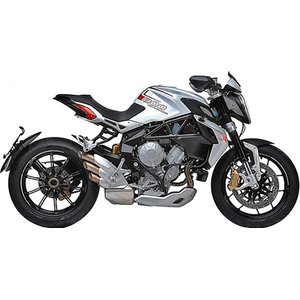MV Agusta Brutale 800 Dragster [2014-2015]: A Symphony of Italian Aggression
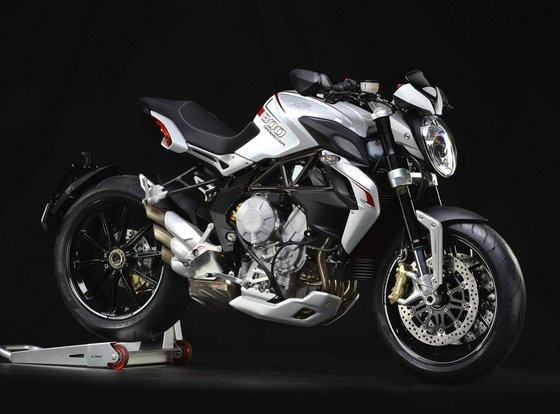
Introduction
The MV Agusta Brutale 800 Dragster isn’t just a motorcycle—it’s a declaration. Built for riders who crave adrenaline but refuse to sacrifice artistry, this machine straddles the line between raw power and meticulous Italian design. Introduced in 2014, the Dragster iteration of the Brutale 800 platform dials up the theatrics with a wider rear tire, sharper styling, and a chassis that feels like it’s perpetually leaning into a corner. Even nearly a decade after its release, the Dragster remains a benchmark for how to blend performance, technology, and sheer audacity into a naked bike. Let’s dissect why this bike still turns heads and thrills riders today.
Design & Aesthetics: Brutal by Name, Artistry by Nature
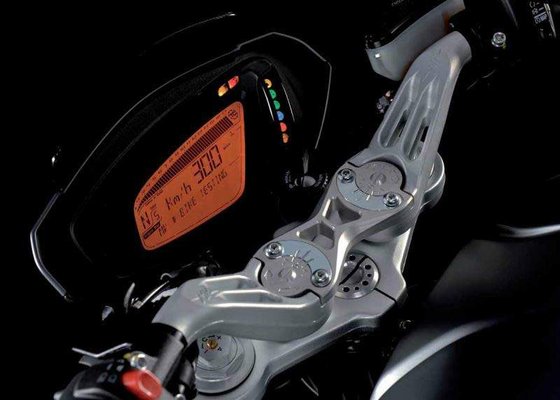
The Dragster’s design is a masterclass in controlled chaos. The trellis frame, a signature MV Agusta element, is left exposed to showcase its engineering prowess, while the stubby tail section and minimalist LED lighting scream modernity. But it’s the 200/50-ZR17 Pirelli Diablo Rosso II rear tire that steals the show—a width typically reserved for superbikes, crammed onto a naked machine. This tire isn’t just for looks; it’s a statement of intent, hinting at the Dragster’s ability to harness its triple-cylinder fury.
The single-sided swingarm adds to the mechanical theater, revealing the rear wheel’s chunky design. Matte finishes dominate the color palette (Metallic Grey and White), giving the bike a stealthfighter aesthetic. The seat, at 811 mm (31.9 inches), is surprisingly approachable for a bike this aggressive, though the narrow profile means shorter riders might still tiptoe. Every detail—from the CNC-machined heel guards to the under-engine exhaust—feels purpose-built to intimidate and entice.
Engine & Performance: The Triple’s Bite
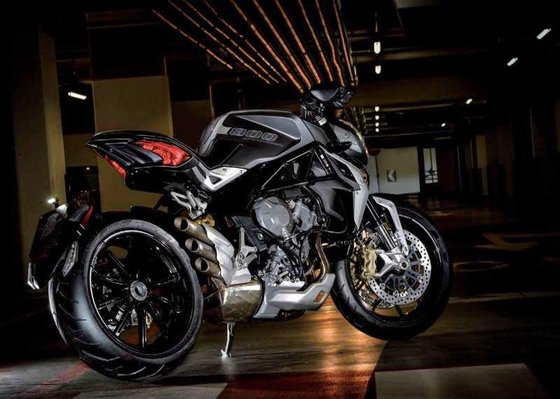
At the heart of the Dragster lies a 798cc inline triple that’s equal parts refined and feral. With 125 HP at 11,600 rpm and 81 Nm (60 lb-ft) of torque at 8,600 rpm, this engine thrives on revs. The counter-rotating crankshaft (a trick borrowed from MotoGP) reduces gyroscopic inertia, making flicking the bike into corners feel unnervingly light. Below 6,000 rpm, the engine is docile—almost polite—but crack the throttle past halfway, and the Dragster transforms. The exhaust note sharpens into a metallic snarl, and the front wheel starts hovering like it’s on a string.
The gearbox is a highlight. The EAS 2.0 quickshifter allows clutchless upshifts and downshifts, and it’s seamless once you’re above 4,000 rpm. Aggressive riders will appreciate the shorter gearing (16/41 final drive), which amplifies acceleration but keeps highway cruising buzzy at 5,000 rpm in sixth gear. Fuel range is decent for a hyper-naked: the 16.6L (4.3-gallon) tank nets about 180-200 km (112-124 miles) before reserve, depending on how often you tap into that top-end rush.
Electronics & Technology: 2014’s Cutting Edge
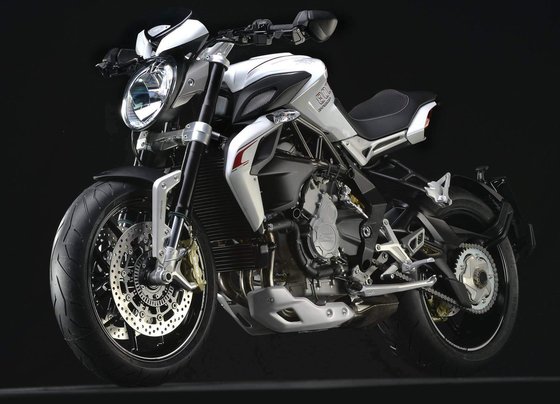
The MVICS 2.0 suite was revolutionary for its time. Four ride modes (Sport, Normal, Rain, and Custom) alter throttle response, torque delivery, and the 8-level traction control. In Rain mode, power is capped at 100 HP, and throttle inputs feel marshmallow-soft. Sport mode unleashes the full 125 HP, sharpening the ride-by-wire response to near-instantaneous. The traction control isn’t as nuanced as modern IMU-based systems, but it’s effective—intervening with a subtle reduction in power rather than abrupt cuts.
The Bosch 9+ ABS works discreetly, even under heavy braking. Pair this with the Brembo radial calipers (320mm front discs), and you get stopping power that’s both brutal and controllable. The only gripe? The LCD dash feels dated by today’s standards, with small fonts and no connectivity. But it’s functional, displaying gear position, fuel level, and TC settings clearly.
Ride Experience: Controlled Madness
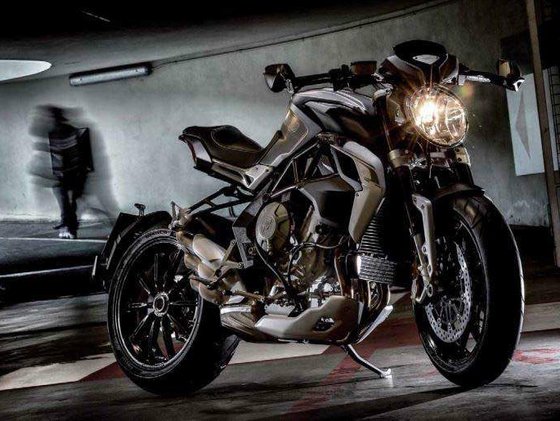
Swing a leg over the Dragster, and the first surprise is the ergonomics. The bars are wide and flat, putting your torso in a committed but not punishing forward lean. The seat, while narrow, is thinly padded—after an hour, you’ll be craving a break. But this bike isn’t meant for touring; it’s a sprinter.
At low speeds, the Dragster feels top-heavy due to the tall seat and fuel tank placement. Once moving, though, the 167 kg (368 lb) dry weight disappears. The suspension—43mm Marzocchi USD forks and a Sachs rear shock—is firm but compliant over bumps. Dial in a few clicks of preload, and the bike carves corners with the precision of a laser-guided missile. The 200mm rear tire inspires confidence mid-corner, though it takes effort to tip into bends initially.
The real magic happens above 8,000 rpm. The triple’s crescendo builds linearly, then explodes into a top-end rush that’s addictive. Keep the throttle pinned, and the Dragster rockets to its 245 km/h (152 mph) top speed with surreal ease.
Competition: How Does It Stack Up?
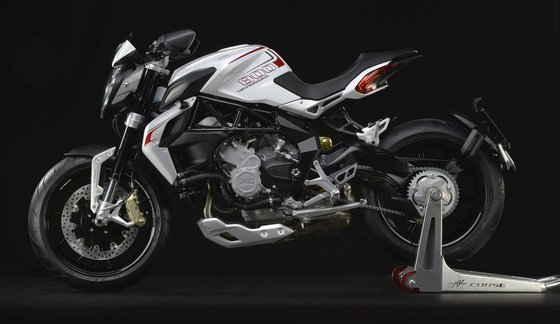
In 2014, the Dragster faced stiff rivals:
- Triumph Street Triple R (675cc): Lighter (183 kg wet) and more affordable, the Triumph’s triple is smoother and torquier low-down. But it lacks the Dragster’s visual drama and electronic aids.
- Ducati Monster 1200: The Ducati’s V-twin delivers gruntier midrange, but its weight (209 kg wet) and higher seat (785-810 mm) make it less flickable.
- Yamaha MT-09: A budget alternative with a rowdier engine and softer suspension. The MT-09 excels at hooliganism but feels crude next to the MV’s premium components.
The Dragster’s USP? It’s a rolling work of art that backs its looks with track-ready tech. While rivals prioritize practicality, the MV appeals to riders who value exclusivity and engineering theater.
Maintenance: Keeping the Beast Alive
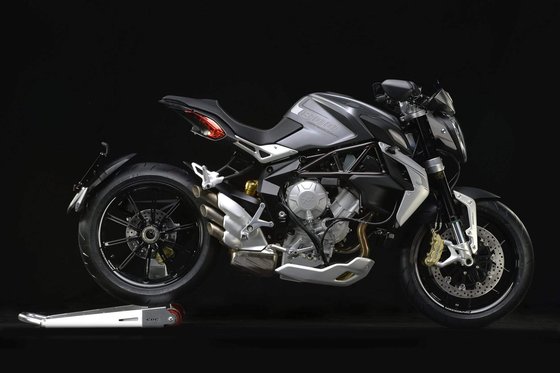
Owning a Dragster requires dedication. The 798cc triple demands frequent valve checks—every 12,000 km (7,500 miles)—and the DOHC setup makes this a labor-intensive job. Use NGK CR9EIB-9 spark plugs for optimal performance, and stick with DOT 4 brake fluid to maintain the Brembos’ bite.
The chain and sprockets (16/41 teeth) wear quickly if ridden aggressively. Upgrade to a premium X-ring chain for longevity. Coolant changes (Water+ formula) every 24,000 km (15,000 miles) are critical to prevent overheating, especially in stop-and-go traffic.
Common wear items:
- Pirelli Diablo Rosso II tires: Expect 5,000-7,000 km (3,100-4,300 miles) from the rear.
- Brake pads: Brembo sintered pads last ~10,000 km (6,200 miles) with spirited riding.
- Clutch plates: The slipper clutch handles abuse well, but replace plates if you notice slippage.
At MOTOPARTS.store, we stock everything from OEM-spec plugs to performance exhausts to keep your Dragster breathing fire.
Conclusion: The Dragster’s Legacy
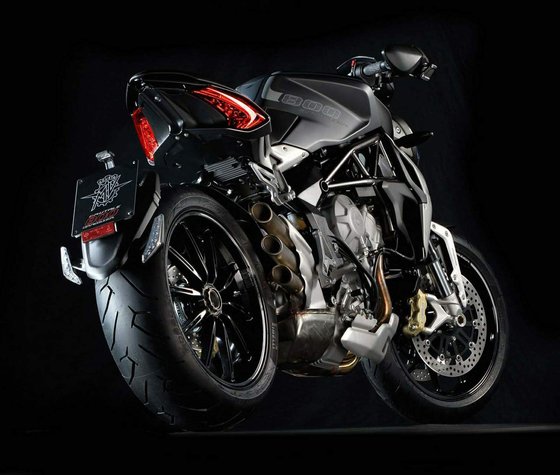
The MV Agusta Brutale 800 Dragster isn’t for everyone. It’s expensive to maintain, impractical for daily commuting, and demands a rider who’s willing to meet its intensity head-on. But for those who click with its personality, it’s unforgettable. This bike rewards skill with razor-sharp handling and an engine that begs to be wrung out. In a world of sanitized, homogenous nakeds, the Dragster remains a rebel—a machine that prioritizes passion over pragmatism.
Ten years on, it’s still the motorcycle equivalent of a tailored Italian suit… if that suit could wheelie into the sunset at 150 mph.
Specifications sheet
| Engine | |
|---|---|
| Stroke: | Four-stroke |
| Max power: | 92 kW | 123.0 hp |
| Max torque: | 81 Nm |
| Fuel system: | Mikuni fuel injection (MVICS 2.0 ride-by-wire) |
| Max power @: | 11600 rpm |
| Displacement: | 798 ccm |
| Max torque @: | 8600 rpm |
| Bore x Stroke: | 79 x 54.3 mm (3.1 x 2.1 in) |
| Configuration: | Inline |
| Cooling system: | Liquid-cooled |
| Compression ratio: | 13.3:1 |
| Number of cylinders: | 3 |
| Dimensions | |
|---|---|
| Wheelbase: | 1380 mm (54.3 in) |
| Dry weight: | 167 |
| Seat height: | 811 mm (31.9 in) |
| Overall width: | 825 mm (32.4 in) |
| Overall length: | 2060 mm (81.0 in) |
| Ground clearance: | 160 mm (6.3 in) |
| Fuel tank capacity: | 16.6 L (4.3 US gal) |
| Drivetrain | |
|---|---|
| Clutch: | Wet multi-disc with mechanical drive |
| Final drive: | chain |
| Gear ratios: | 1st: 13/37, 2nd: 16/34, 3rd: 18/32, 4th: 19/30, 5th: 21/30, 6th: 22/29 |
| Transmission: | 6-speed cassette-style gearbox |
| Rear sprocket: | 41 |
| Front sprocket: | 16 |
| Electronics | |
|---|---|
| Ride modes: | Sport, Normal, Rain, Custom |
| Quick shifter: | EAS 2.0 (up/down) |
| Throttle system: | Full ride-by-wire |
| Traction control: | 8-level adjustable |
| Maintainance | |
|---|---|
| Engine oil: | 10W40 |
| Brake fluid: | DOT 4 |
| Spark plugs: | NGK CR9EIB-9 |
| Coolant type: | Water-based ethylene glycol |
| Valve clearance (intake, cold): | 0.10–0.20 mm |
| Valve clearance check interval: | 24,000 km (15,000 mi) |
| Valve clearance (exhaust, cold): | 0.20–0.30 mm |
| Chassis and Suspension | |
|---|---|
| Frame: | ALS steel tubular trellis with aluminum alloy plates |
| Rear tire: | 200/50 z-17 pi-elli diablo -osso ii |
| Front tire: | 120/70 z-17 pi-elli diablo -osso ii |
| Rear brakes: | 1 x 220 mm disc, 2-piston Brembo caliper (ABS) |
| Front brakes: | 2 x 320 mm floating discs, 4-piston Brembo calipers (ABS) |
| Rear suspension: | Progressive Sachs monoshock, fully adjustable (125 mm travel) |
| Front suspension: | 43 mm Marzocchi USD fork, fully adjustable (125 mm travel) |



